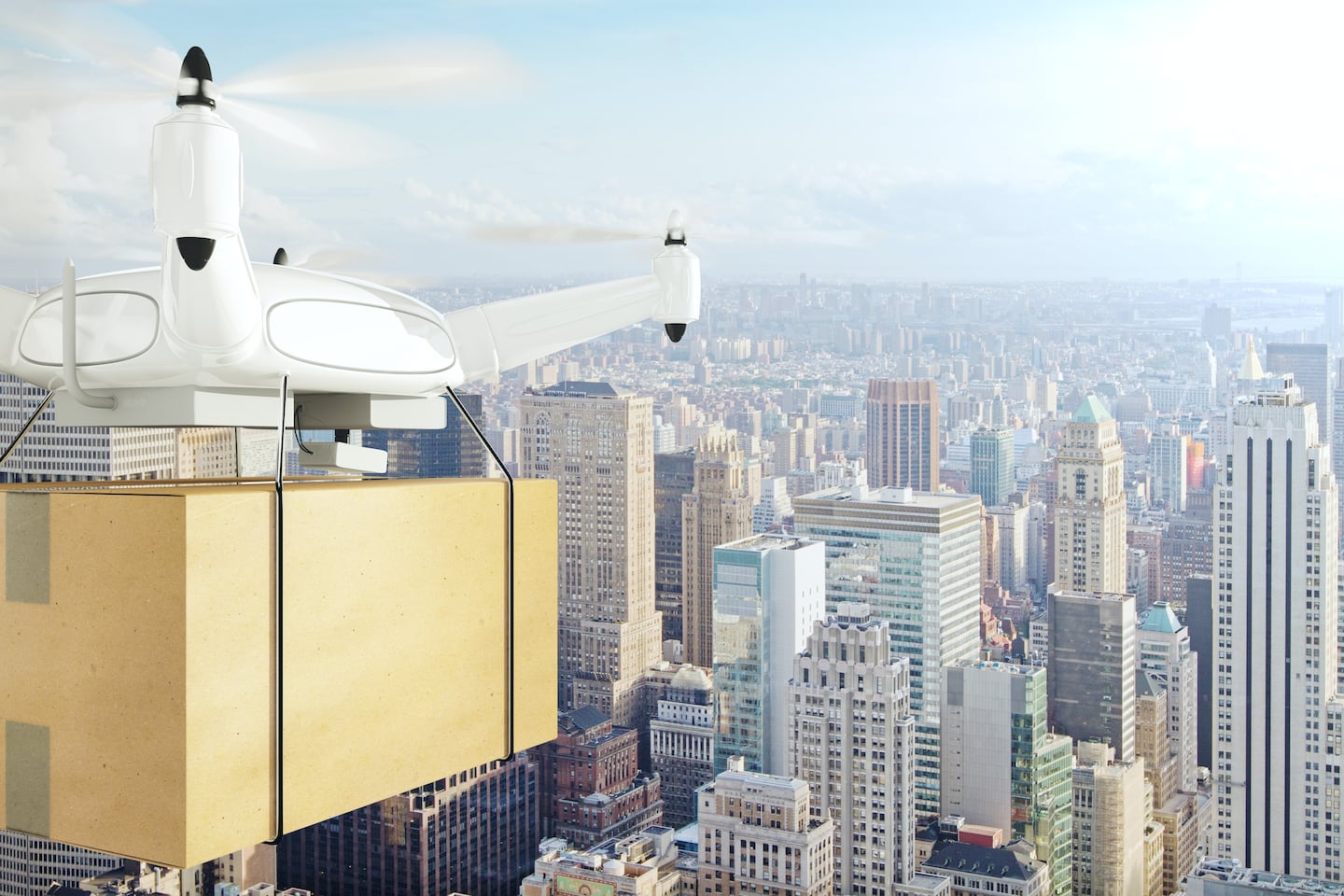
The Business of Fashion
Agenda-setting intelligence, analysis and advice for the global fashion community.

Agenda-setting intelligence, analysis and advice for the global fashion community.

NEW YORK, United States — Wal-Mart Stores Inc. has opened a new front in its battle with Amazon.com Inc.
The world’s largest retailer has applied for a US patent for a floating warehouse that could make deliveries via drones, which would bring products from the aircraft down to shoppers’ homes.
The blimp-style machine would fly at heights between 500 feet and 1,000 feet (as much as 305 metres), contain multiple launching bays, and be operated autonomously or by a remote human pilot. Amazon was granted a patent for a similar vessel in April 2016.
The migration to the skies represents the latest volley in a clash between Wal-Mart and Amazon to grab shoppers’ attention, loyalty and dollars. In the process, the companies are increasingly treading on the other’s turf: Amazon is opening physical stores and agreed to pay $13.7 billion for upscale grocer Whole Foods Market Inc. Wal-Mart, meanwhile, has beefed up its e-commerce business through acquisitions and offers like free two-day shipping.
ADVERTISEMENT
An unmanned airborne warehouse — laden with drones — could help retailers lower the costs of fulfilling online orders, particularly the so-called "last mile" to a customer's house, which is usually handled by a local or national logistics company. To avoid that expense, Wal-Mart and other retailers often encourage shoppers to pick up those orders at the store, where they might grab a few additional items. Earlier this week, Target agreed to acquire a software company that coordinates local deliveries.
“The core challenge of traffic and driving distance in any major city or in a very rural location can be helped by a floating warehouse,” said Brandon Fletcher, an analyst at Sanford C. Bernstein. “Movable warehouses are a really nice idea because any flexible part of a logistics system allows it to be more efficient when demand varies wildly. The e-commerce world suffers from highly variable demand and more creative solutions are needed.”
A movable warehouse could serve a wider distribution area, Fletcher said, compared with a traditional warehouse that can only fill orders within a fixed driving distance. The airship could fly to one town and release a flock of drones to deliver packages, after which the drones would return to the vessel and restock while it flew to the next town. Such a system would be more efficient than having the drones fly back to a central distribution hub, according to research firm CB Insights.
“There are numerous ways to distribute and deliver products,” according to Wal-Mart’s patent application. “Getting the product to a delivery location, however, can cause undesirable delays, can add cost and reduce revenue.”
Wal-Mart’s application stands a good chance of getting approved as it goes into more detail about the implementation of a gas-filled aircraft than Amazon’s patent, which is a more general description of the concept of airborne-delivery systems, according to Khaled Fekih-Romdhane, managing partner at patent-licensing firm Longhorn IP.
This isn’t the first time Wal-Mart has shadowed Amazon’s intellectual property. In October, it filed a patent application for a web-based system similar to Amazon’s Dash buttons, which can quickly reorder household goods like paper towels or razor blades. The technology could also gather shopper data, such as how often a product is used and at what times of day.
In recent years, Wal-Mart has significantly stepped up its patent filings, many of which focus on web development and easing shoppers’ journey through the store. The company has also filed a patent for in-store drones that would ferry products from the backroom to the sales floor.
By Matthew Boyle, with assistance from Julie Verhage; editors: Caroline Salas Gage, Nick Turner, Jonathan Roeder.
Related Articles:

From analysis of the global fashion and beauty industries to career and personal advice, BoF’s founder and CEO, Imran Amed, will be answering your questions on Sunday, February 18, 2024 during London Fashion Week.
The State of Fashion 2024 breaks down the 10 themes that will define the industry in the year ahead.
Imran Amed reviews the most important fashion stories of the year and shares his predictions on what this means for the industry in 2024.
After three days of inspiring talks, guests closed out BoF’s gathering for big thinkers with a black tie gala followed by an intimate performance from Rita Ora — guest starring Billy Porter.